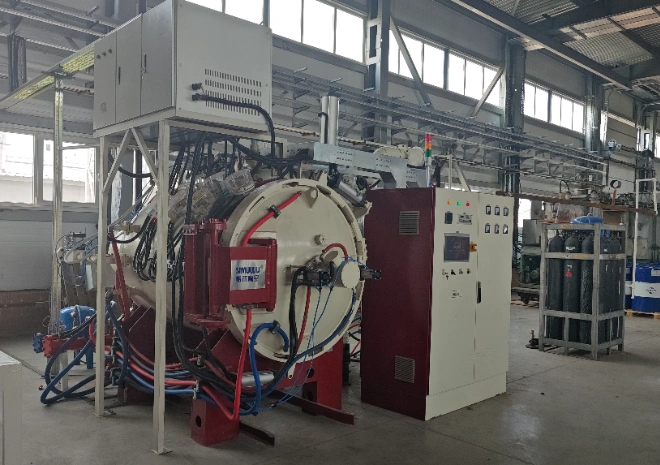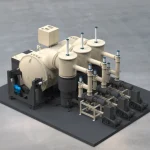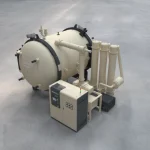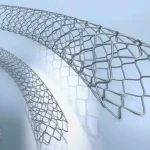Vacuum Furnace Heat Treatment Overview
Vacuum furnace heat treatment is an advanced heat treatment technique that involves heating a workpiece to a specific temperature in a controlled vacuum environment, holding it at that temperature for a specified time, and then cooling it according to process requirements. With the rapid development of high-tech industries such as semiconductor manufacturing, medical device production, and high-performance automotive parts, the demand for precision, high-quality heat treatment of various materials has grown. Vacuum furnace heat treatment has become a key process for achieving superior material properties.

This method effectively prevents oxidation, decarburization, and other harmful chemical reactions that can occur during traditional heat treatment in air. By eliminating the presence of oxygen and other reactive gases, vacuum furnace heat treatment produces components with clean surfaces, improved dimensional stability, and enhanced mechanical properties.
Main Applications of Vacuum Furnace Heat Treatment
Precision Alloy Heat Treatment: For alloys used in aerospace and high-precision instrumentation, vacuum furnace heat treatment allows precise control of microstructure and properties, ensuring high dimensional accuracy and reliability.
Dissimilar Metal Brazing and Soldering: It provides an ideal environment for joining dissimilar metals, preventing the formation of intermetallic compounds and ensuring strong, defect-free joints. Sintering powder metallurgy parts helps produce high-density, uniform sintered parts with excellent mechanical and physical properties.
Annealing special steels, such as tool steel and stainless steel, improves their toughness, ductility, and stress relief capabilities.
Implementing Vacuum Furnace Heat Treatment
A specialized vacuum furnace is essential for vacuum furnace heat treatment. This article uses the VHT series vacuum furnace from a well-known manufacturer as an example to explain the basic components of a vacuum furnace.
Components of a Vacuum Furnace
The VHT series vacuum furnace primarily consists of a furnace chamber, a vacuum system, heating elements, a cooling system, a gas control system, and an electrical control system. The furnace chamber is designed to withstand high temperatures and maintain a stable vacuum environment. The vacuum system is responsible for generating and maintaining the required vacuum level within the furnace. The heating elements evenly distribute heat throughout the furnace chamber to ensure uniform temperature distribution. The cooling system rapidly cools the workpiece after heat treatment, while the gas control system introduces specific gases for different heat treatment processes. The electrical control system precisely controls all furnace operations, from temperature control to vacuum level regulation.
The primary function of a vacuum furnace is to create a controlled thermal environment. Its operation begins by evacuating the furnace chamber to the desired vacuum level. Once the required vacuum level is achieved, the workpiece is heated according to a preset temperature-time profile. After heat treatment is complete, the cooling process begins. Cooling can be rapid using a gas quenching system or slow, depending on the material and process requirements.
The Role of Vacuum Furnace Heat Treatment
Material Performance Enhancement: Significantly improves a material’s hardness, strength, and wear resistance while maintaining or improving its toughness.
Reducing Residual Stress: Minimizing internal stresses in the workpiece reduces the risk of cracking and deformation during subsequent processing or use.
Improving Surface Quality: Producing smooth, clean parts free of oxidation and contamination, which is essential for applications where surface finish is critical.
Precise Microstructure Control: Fine-tuning the material’s microstructure is possible to achieve specific mechanical and physical properties.
Introduction to Vacuum Furnace Heat Treatment Processes
Vacuum furnace heat treatment is widely used in industrial production. Depending on the specific requirements of the workpiece, various heat treatment processes are used, including vacuum quenching, vacuum tempering, and vacuum solution treatment. It is important to note that the choice of vacuum level, heating rate, holding time, and cooling method must be carefully considered based on the material’s characteristics. For example, some materials may require higher vacuum levels to prevent oxidation, while other materials may require the use of specific gas atmospheres during heat treatment to achieve the desired properties.
Cuum furnace heat treatment depends on factors such as the furnace’s temperature uniformity, vacuum purity, and process control accuracy.
The VHT series vacuum furnace produced by this manufacturer is a high – quality solution for vacuum furnace heat treatment. With its excellent temperature control precision and uniformity, it ensures the reliable implementation of various heat treatment processes. This manufacturer has a long – standing reputation in the field of vacuum furnace manufacturing, with extensive experience and a comprehensive product line that includes vacuum carburizing furnaces, vacuum nitriding furnaces, and more. These products are widely exported to both developed and developing countries, meeting the diverse needs of different industries.








